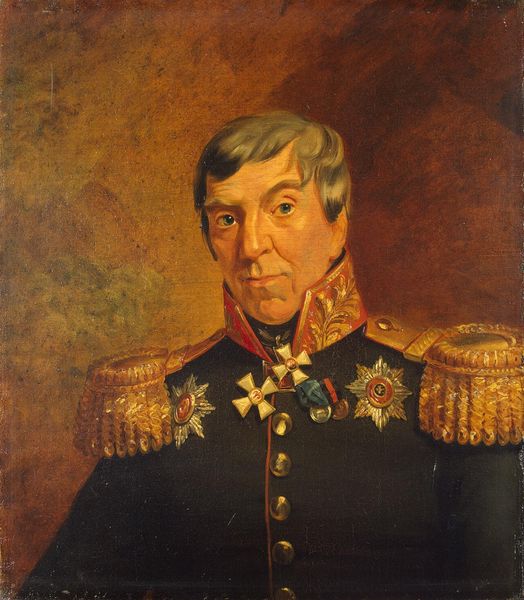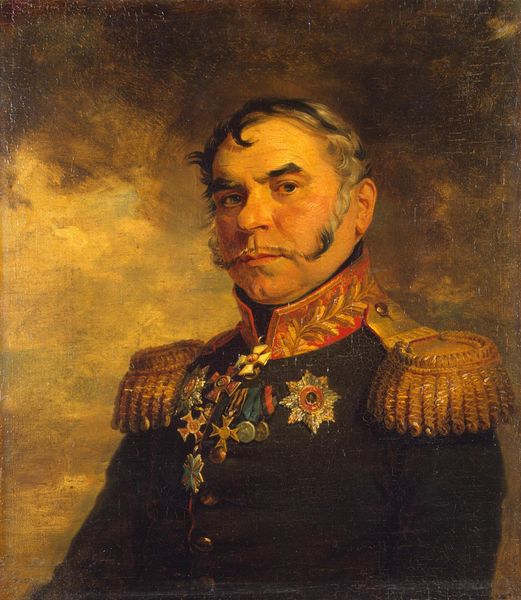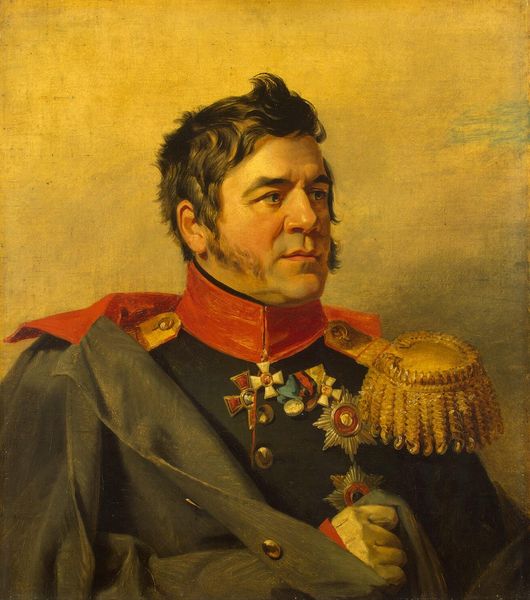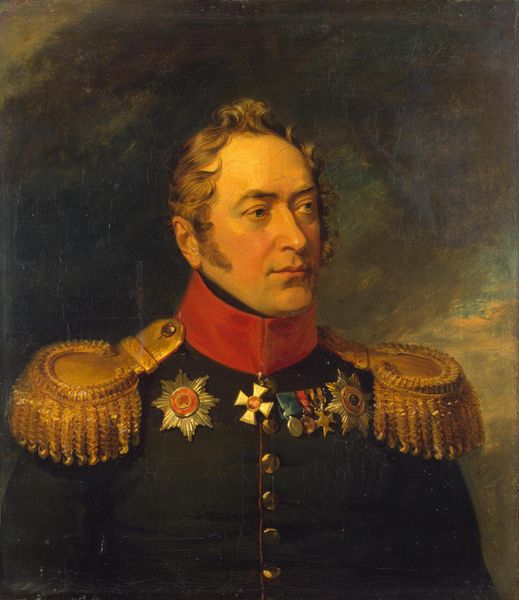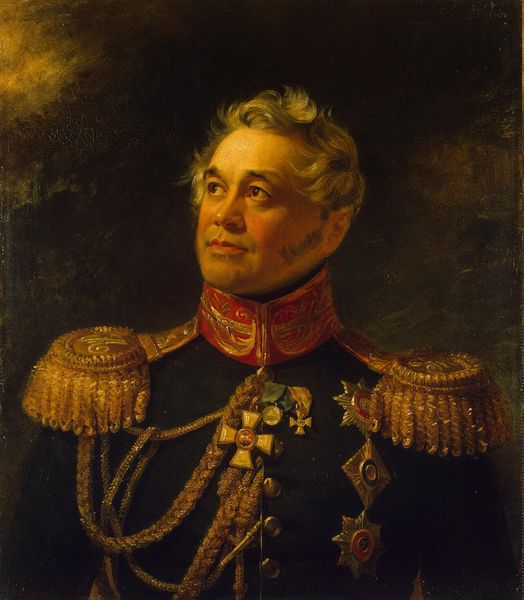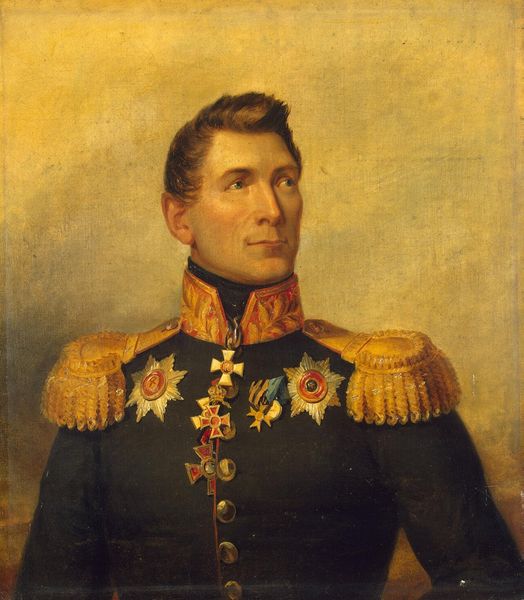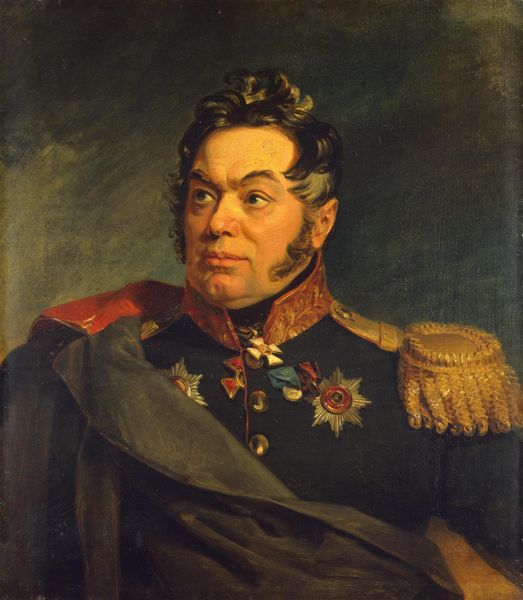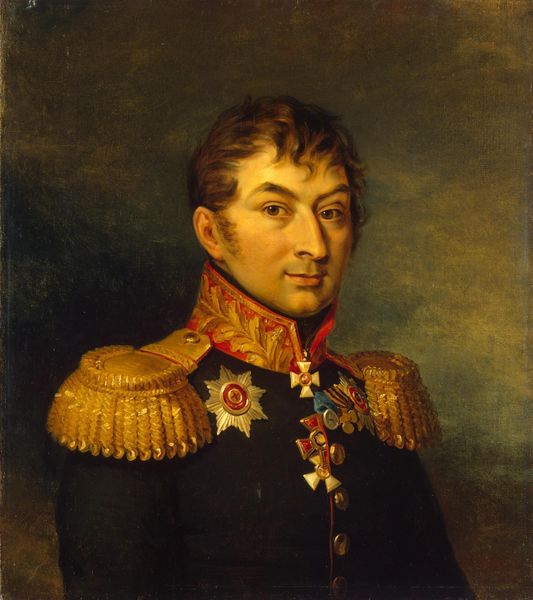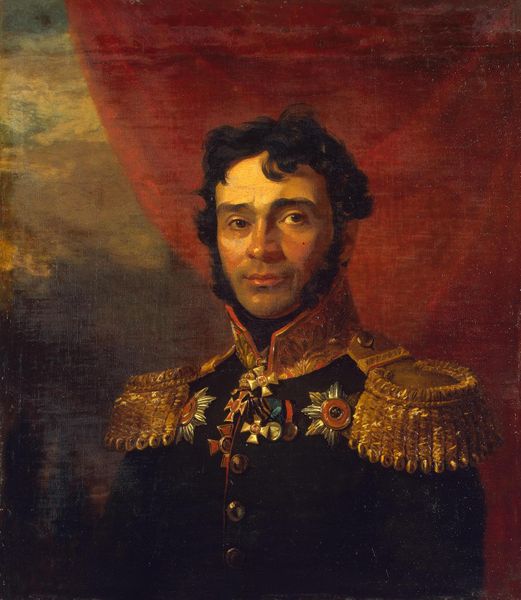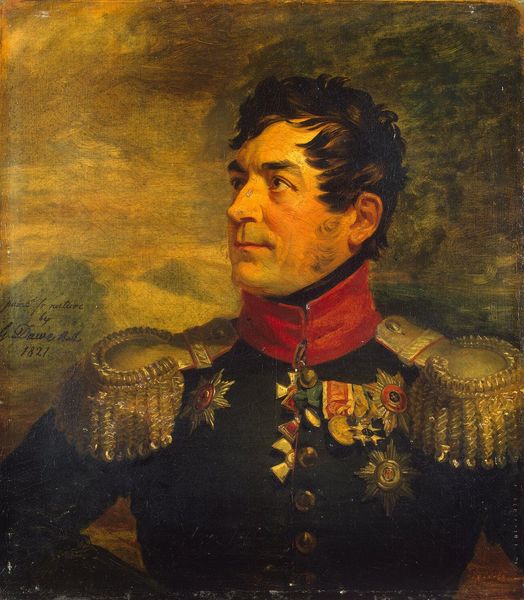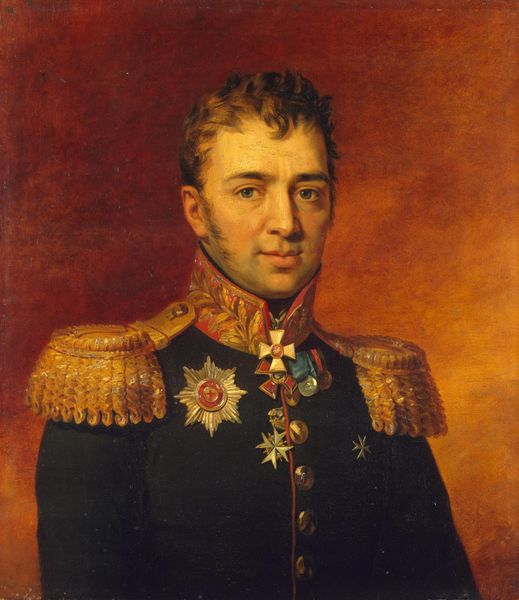
painting, oil-paint
#
portrait
#
portrait
#
painting
#
oil-paint
#
romanticism
#
history-painting
Copyright: Public domain
Editor: This is George Dawe's 1824 portrait of Alexey Andreyevich Arakcheyev. It’s oil on canvas and currently resides in the Hermitage Museum. There's something austere and unforgiving in his gaze. What strikes you most about this work? Curator: I’m immediately drawn to the socio-political context surrounding Arakcheyev. He was a powerful, yet deeply unpopular figure in the Russian army, known for his ruthless enforcement of discipline. Knowing this, how does Dawe’s portrait function? Is it propaganda, a neutral depiction, or perhaps a subtle critique? Editor: Propaganda, maybe? The medals seem to suggest that. What kind of message do you think Dawe wanted to convey, consciously or unconsciously? Curator: Consider the Romanticism movement prevalent at the time. Often, even when depicting figures of authority, artists subtly hinted at the internal struggles, contradictions, or moral ambiguities of their subjects. What kind of dialogue does the painting invite, regarding the problematic legacies of power and those who wield it? Do you see an inherent tension between Arakcheyev’s external display of power and the potential for internal turmoil? Editor: I guess so! I hadn't thought about looking at it in terms of internal conflict, rather than outward presentation. Thank you. Curator: And think about this: why immortalize Arakcheyev? What purpose does this portrait serve, and for whom? Exploring those questions lets us dive into the complex relationship between art, power, and memory. Editor: That's a great point. I'll never look at another portrait the same way again.
Comments
No comments
Be the first to comment and join the conversation on the ultimate creative platform.
